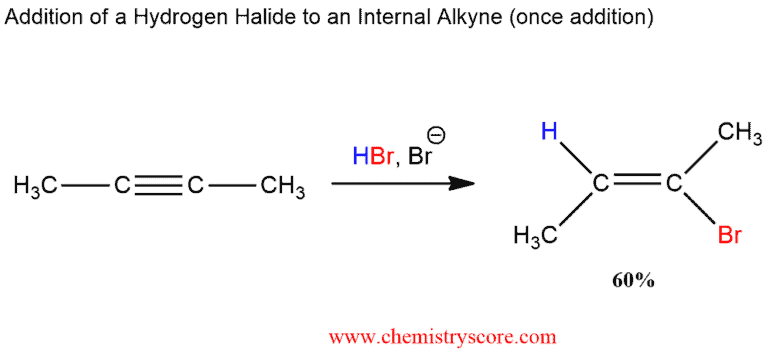Addition of HCl, HBr, or HI (twice)
Addition of HCl, HBr, or HI (twice) Definition:
The addition of hydrogen chloride, hydrogen bromide, or hydrogen iodide to alkynes can be once (when adding one molecule of HX) or twice (when adding one more molecule of HX).

Addition of HCl, HBr, or HI (twice) Explained:
When the starting alkyne is treated with excess HX, two successive addition reactions occur, producing a geminal dihalide. The reaction takes place in two steps and may be stopped at the haloalkene (or vinyl halide) stage or, react further with another mole of HX, to the geminal (both halogens on the same carbon) dihalide stage.

The stereochemistry of this type of addition is typically anti, particularly when excess halide ion is used. A second molecule of hydrogen bromide may also add (twice addition), with regioselectivity that follows Markovnikov rule, giving the product with both bromine atoms bound to the same carbon, a geminal dihaloalkane.

The addition of the hydrogen halides to terminal alkynes also proceeds in accord with the Markovnikov rule, but it is usually difficult to limit such reactions to an addition of a single molecule of HX.
